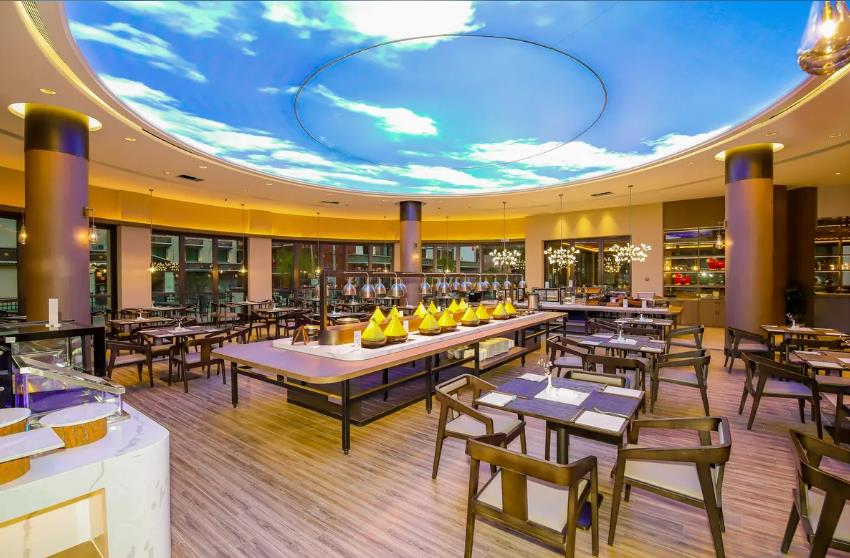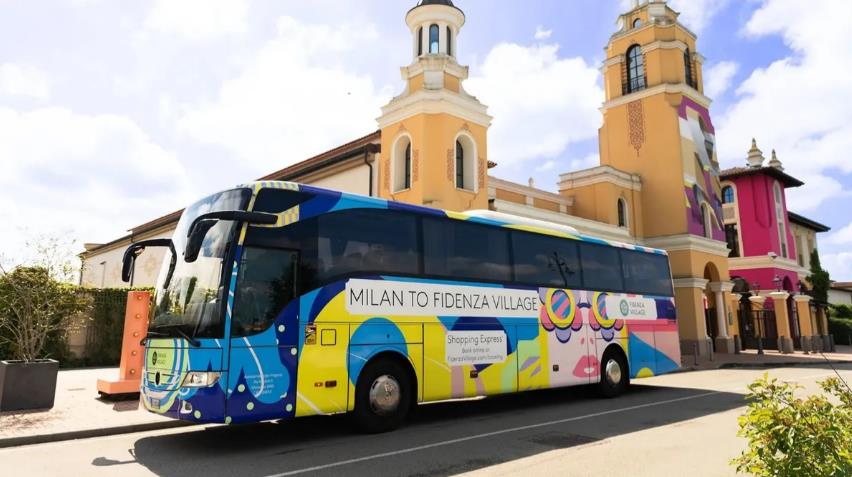https://uk.trip.com/moments/destination-zadar-county-4037/
2025 Zadar County Travel Guide: Must-see attractions, popular food, hotels, transportation routes (updated in April)
Popular Attraction in Zadar County
Sea Organ
(23)Zadar City Gate
(1)All Moments About Zadar County
The beauty of Croatia
#AprilTravelSupport There is a painting shop run by a grandfather in Zadar Old Town, and the walls are filled with beautiful, colorful paintings. If you have extra luggage, I recommend it because you can enjoy the beauty of Croatia in a frame at home. #croatiatravelReisetanteA painting of the beautiful landscape of Zadar
#AprilTravelSupport While sightseeing in Zadar Old Town, I was able to see paintings of beautiful scenery of Zadar. I don't know if the old man who was sitting there painted it himself, but he allowed me to take pictures, so I'm uploading them. I recommend these beautiful paintings of Zadar scenery that you can bring home as a collection. #croatiatravelReisetanteTry taking a walk when it gets cool around sunset.
#AprilTravelSupport Zadar Promenade is so nice to walk with the beautiful sea in the background, so I recommend taking some time to walk while sightseeing in Zadar city. I recommend walking when the weather gets cooler at sunset rather than during the day when the weather is too hot. 📍Ul. Zadarskog Mira 1358. 24, 23000, Zadar, Croatia #croatiatravelReisetanteStones lying in a heap
#AprilTravelSupport The stones that are left lying around sometimes become places where children climb up and jump, but I thought that they might have been part of a structure that supported the important weight of some building hundreds of years ago, so I thought it would be good if they were managed a little better now. There are many historical sites scattered around Zadar, so I recommend it because there are many things to see. #croatiatravelReisetantePlease check the business hours before visiting.
#AprilTravelSupport Croatia Zadar Glass Museum entrance fee is 6 euros. It is open until 9 pm during peak season, but only until 4 pm during off-peak season, so it is recommended to check the opening hours before visiting. #croatiatravelReisetanteAs the boat goes from the inner harbor to the outer harbor
#AprilTravelSupport Zadar Center The view of the boats anchored in the inner harbor going out to the outer harbor and going out to the sea makes me excited every time I see them. I recommend this tour to those who want to see the numerous islands and maritime national parks in Croatia. #croatiatravelReisetanteDeparting from Zadar
#AprilTravelSupport I went on a full-day boat tour to Croatia's national parks Kornati and Telasicca from Zadar. The boat was waiting just a short walk to the right after crossing the bridge connecting to the Old Town. I really liked the tour schedule, so I recommend it. #croatiatravelReisetanteGo to the local supermarket
#AprilTravelSupportWhen I travel to other countries, I like to go to the local market, buy groceries, and cook for myself. In Croatia, where there is a variety of seafood, I bought fresh seafood that I wanted to eat and cooked a delicious seafood dish in an apartment where I could cook. It may vary depending on personal taste, but I recommend it if you like living like a local. #croatiatravelReisetanteWhen there is no place to leave your carrier
#AprilTravelSupport When you have time to spare before checking in downtown Zadar or when you check out and have nowhere to leave your luggage, this is a useful place to store your luggage in the city center. You can scan the QR code, receive confirmation via email, and leave your luggage, so I recommend it to those who need it. #croatiatravelReisetanteFerry dock to Preco
#AprilTravelSupport The ferry dock from Zadar Center to Preko is at this address. I booked my ticket online on the shipping company's website. They also sell on-site, but it's 400m away from here, so I recommend you buy it online. 📍Liburnska obala 4, 23000, Zadar, CroatiaReisetanteIn front of Zadar City Hall building
#AprilTravelSupport There are many cafes and restaurants in front of the Zadar City Hall building, and you can feel the lively atmosphere of Zadar. The Palais du Corps de garde, a building used as a city guard building, is also located on the left, so there are many historical things to see, so I recommend it. #croatiatravelReisetanteChurch of St. Simon
While exploring the area near Five Wells Square, I had the chance to visit the Catholic church when it happened to be open. After the mass ended, during the cleaning time, a group of tourists entered the church, and I joined them to take a look around. This church houses the relics of St. Simon and does not seem to be open all the time. However, it is definitely worth a visit, and I highly recommend it. 📍Ul. don Ive Prodana 13, 23000, Zadar, CroatiaReisetanteAt Zadar Airport in Croatia
#AprilTravelSupport After arriving at Zadar Airport in Croatia, I was waiting for the airport bus to the city center, and since I had some time to spare, I was able to ask questions at the Information Desk in the departure area. I think many Koreans will visit Zagreb and Dubrovnik, the capital cities of Croatia, which are familiar and famous to them, so I recommend visiting Zadar, which is lesser-known. #croatiatravelReisetanteZadar~~Small town with many churches
Zadar, the fifth largest city in Croatia, was once the capital of the Dalmatia province of the Byzantine Empire (Eastern Roman Empire). The old town of Zadar where we stayed is located on a small peninsula, surrounded by medieval walls and retains many ancient Roman ruins and buildings. The entire ancient city was planned according to the standards of the ancient Roman Empire, with the widest streets. The saying "All roads lead to Rome" comes from the requirements of the ancient Roman Empire for city building. The main street is only about 1 kilometer long from east to west. The main entrance to the city wall is the Land Gate, a gorgeous Renaissance building with a statue of a Venetian lion on it. The city wall extends along the coastline, and part of it has been built into pedestrian walkways and parks, displaying the city's development. There are more than twenty churches in the city. The Church of St. Donat (Crkva Sveti Donata), built of stone in the early ninth century, is shaped like a thick cylinder. It is one of the oldest pre-Romanesque buildings in Croatia and the symbol of Zadar. I entered the Zadar Cathedral (Cathedral of St. Anastasia) for a visit. It is the largest and most important church in Zadar. It was built in the 12th and 13th centuries. It is a mixture of Romanesque and Gothic styles. It has a towering bell tower that tourists can climb to the top to enjoy the panoramic view of Zadar. Next to the church is Zadar's Roman Forum, which contains many relics from the Roman era, such as altars, columns, wells and statues. Designed by renowned architect Nikola Bašić, the Sea Organ looks like a series of wide steps along the shore, but hidden beneath the surface is an ingenious sound-generating system consisting of 35 pipes and resonance chambers that produce different tones depending on the size and speed of the waves. This is also a good place to enjoy the sunset. The wind was strong and the clouds were thick today, so we couldn't see the sunset, but the sound of the organ was particularly loud. Life is not perfect, it is often a mixture of good and bad. If you think positively about everything, your life will be more comfortable and happy. The adjacent Sun Salutation is another stunning art installation made up of 300 multi-layered glass panels forming a circular platform with a diameter of 22 meters. These glass panels absorb solar energy during the day and emit brilliant light after sunset, creating a spectacular waterfront light show. Not only do these lights simulate the movement of the sun, moon and stars, they also interact with the music of the Sea Organ to create a dreamy atmosphere. This urban light corridor is very modern and attracts many young people to stop. There are five ancient wells on the Square of Five Wells, which were once the main source of water for Zadar during the siege period. This is the origin of the square's name. In the 16th century, the Turks continued to invade. In addition to building walls here to resist foreign enemies, the Venetians also built large water tanks in front of the moat. These five wells were the outlets of the water tanks, used to provide drinking water for the residents at that time. Next to the square is Queen Jelena Madijevka Park, the first public park in Croatia. People’s Square is the oldest and liveliest square in Zadar and is surrounded by many historical buildings, such as the City Hall, the Guardian Tower, the Loggia del Comune and the Church of St. Lawrence. There are stalls in the middle selling agricultural products such as jam, olive oil, wine, and handicrafts. After dinner, we went shopping and returned to the hotel in the cool October breeze of Zadar.展開退休新生活的Jane Ling3Kiss of the hot sun, Croatia [Zadar]
Zadar is a small city located on the left side of Croatia! Like Split, it retains the appearance of ancient Rome :) Zadar is also famous for having one of the world's top 3 sunsets! If you go to the far left of the old town, you can watch the sunset while listening to the sound of the sea organ played by the waves! It changes into a different look in the evening! As yellow lights turn on one by one, lighting up the alleys, you can see the alleys filled with people who have come out to enjoy the night culture! ----------------- 📍Sea Organ: Obala kralja Petra Krešimira IV, 23000, Zadar, Croatia 📍Cathedral of St. Stošija: Trg Svete Stošije, 23000, Zadar, Croatia #European travel destination #European sensibility #European travel #Croatia travel #Zadar travel #Croatia Zadar #European atmosphere #Sunset #Glow #Sea #Croatia #Zadar #Europe #Travel어건씨1

Popular Zadar County Topics

Attractions
16 posts

Restaurants
5 posts

Guides
4 posts

Destinations related to Zadar County

Bangkok
34035 posts

London
4882 posts

Istanbul
1676 posts
Post
More Recommendations
Popular Travel Types
Popular Trip Moments
"Enchanted Croatia: A Romantic Encounter with Medieval Towns and Azure Coastlines!" | Church of St. Simon | Biograd na Moru Croatia | 8-day in-depth tour guide for Croatia and other countries | A breathtakingly beautiful European tour during Qingming Festival | 10-day in-depth tour of Croatia and other countries - great guide | Zadar, a Croatian ancient city with a rich history spanning millennia. | 8-day tour of Croatia and other countries with friends | Highlights | 6-Day European Tour: Super Practical Guide for Quick Collection | 7-Day Tour of Hungary and Other Countries: Museum Tour Guide | Balkan Peninsula 13 days: Take in the stunning scenery of Croatia, Slovenia and Bosnia! | 7-day tour of Hungary and other countries, super practical guide is here | A chair placed outside | The beauty of Croatia | A painting of the beautiful landscape of Zadar | Try taking a walk when it gets cool around sunset. | Fried food of exceptional quality | The best restaurant I've eaten at in Zadar | Stones lying in a heap | Please check the business hours before visiting. | As the boat goes from the inner harbor to the outer harbor | Departing from Zadar | PICNIC - mingle&fun | Go to the local supermarket | In front of the gate | When there is no place to leave your carrier | Where to catch a boat from Zadar to Preko | Because it is famous in Zadar | Zadar City Hall building | Preko Beach, Croatia
Popular Destinations
Koh Samui Travel | Manila Travel | Da Nang Travel | Reading Travel | Bradford Travel | Greater London Travel | Türkiye Travel | Jeddah Travel | Derby Travel | Tenerife Island Travel | Eastbourne Travel | Seville Travel | Apulia Travel | Canary Islands Travel | Rhodes Travel | Shangri-La Travel | Scarborough Travel | Matsuura Travel | Halton Travel | Washington County Travel | Tahoe Vista Travel | Hartford Travel | Chaozhou Travel | Mishawaka Travel | Lewis County Travel | Cranfield Travel | Treviso Travel
Recommended Attractions at Popular Destinations
Bangkok attraction near me | Manila attraction near me | Tokyo attraction near me | Taipei attraction near me | Hong Kong attraction near me | Seoul attraction near me | Kuala Lumpur attraction near me | Los Angeles attraction near me | Shanghai attraction near me | New York attraction near me | Shenzhen attraction near me | Osaka attraction near me | Singapore attraction near me | London attraction near me | Guangzhou attraction near me | San Francisco attraction near me | Beijing attraction near me | Macau attraction near me | Bali attraction near me | Jakarta attraction near me | Paris attraction near me | Ho Chi Minh City attraction near me | Istanbul attraction near me | Phuket attraction near me | Chicago attraction near me | Seattle attraction near me | Toronto attraction near me | Orlando attraction near me | Cebu attraction near me | Chiang Mai attraction near me
Popular Restaurants in Zadar County
Bistro Hedonist | Konoba Bonaca | Corte Vino & More | Gusti IX | Restaurant - Aparthotel Lekavski | Restoran Matanovi dvori | Restaurant City Laguna Zadar | Tramonto Restaurant | Beach Bar Bamboo | Pizzeria Šime | Coffee & Cake - Kavana CENTAR | Proto Food&More | Zlatni Vrt | Momi | Konoba Kojo | Bistro Gradela | Restaurant Degenija | Pasta & Svasta | Trapula Wine & Cheese Bar | Konoba BRAGOC | Trattoria Peperoni | La Famiglia | Harbor | Restaurant Galija | Restaurant Spajza | Lungo Mare | Bistro Ankora | Figurica | Bistro Gušti | Urban Piknik
Popular Ranked Lists
Popular Luxury Hotels in Al Ula | Top 9 Local Restaurants in Colombo | Top 8 Local Restaurants in Nadi | Top 20 Local Restaurants in Lhasa | Popular Premium Hotels Near Dearborn | Popular Luxury Hotels in Nizwa | Popular Best Things to Do in Yangquan | Top 8 Best Things to Do in Aksu Prefecture | Popular Best Things to Do in Lincang | Top 4 Best Things to Do in Huidong | Top 10 Local Restaurants in Boston | Popular Luxury Hotels Near Naxos | Popular Best Things to Do in Ziyuan | Top 17 Local Restaurants in Yokohama | Top 15 Local Restaurants in Christchurch | Popular Best Things to Do in Jixi | Top 3 Luxury Hotels in Tashkent | Popular Luxury Hotels Near Varberg | Popular Luxury Hotels in Kieni East | Popular Luxury Hotels in Astana | Popular Luxury Hotels Near Fort William | Top 3 Luxury Hotels in Kavrepalanchok | Popular Luxury Hotels Near Anand | Top 9 Local Restaurants in Wellington | Top 4 Best Things to Do in Daxin | Top 3 Luxury Hotels in Dhaka | Popular Best Things to Do in Nan'ao | Top 8 Local Restaurants in Saipan | Top 15 Local Restaurants in Detroit | Top 12 Local Restaurants in Akureyri
Payment Methods
Our Partners
Copyright © 2025 Trip.com Travel Singapore Pte. Ltd. All rights reserved
Site Operator: Trip.com Travel Singapore Pte. Ltd.
Site Operator: Trip.com Travel Singapore Pte. Ltd.